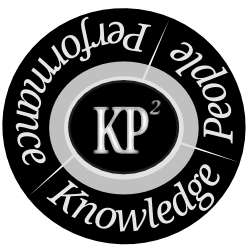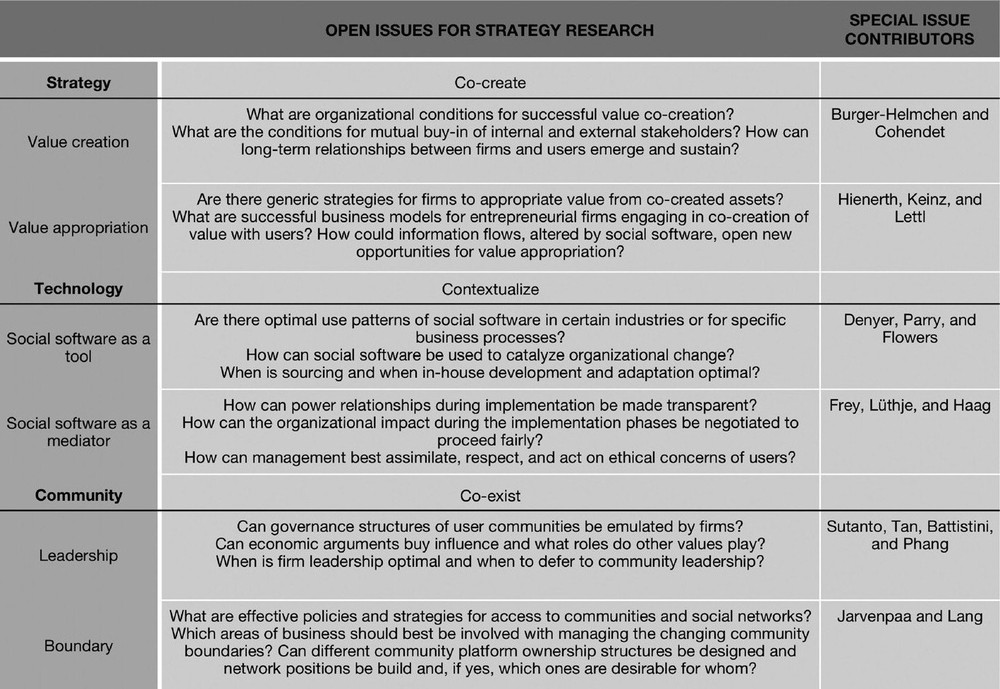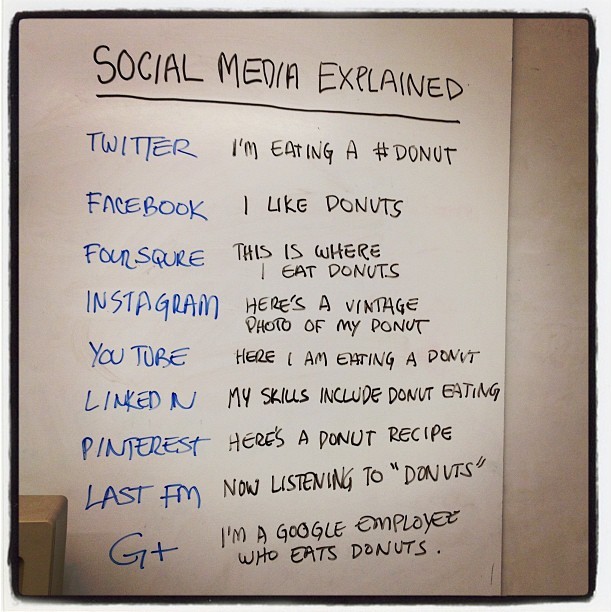The doctoral program I’m in right now is called Dynamic Capabilities and Relationships, in short DCR. I’ve been trying for a while to make connections between the phenomenon I’m interested in, i.e. social software use in organizations, and strategic management. With publications like the one below from Haefliger and colleagues, bridges are being built and the path from the former to the latter is being made visible. I did not come across any work to date, however, that would explicity address the link between social software use and its implications on (the strategic management concept of) Dynamic Capabilities. Reading the below passage in a MISQ comment by Ann Majchrzak got me really excited:
Yet many contributors to organizational wikis […] organize others’ contributions not for social exchange or social capital motives, but instead because they are genuinely concerned about the organization’s ability to adapt to the needs of a volatile environment (Majchrzak et al. 2006). Not only should findings like this encourage us as researchers to rethink social exchange and social capital theories, but they also should encourage researchers in other domains, such as dynamic capabilities models (Eisenhardt and Martin 2000) to modify their theories to include information shaping as an important dynamic capability of a firm.
We’ll have Jeff Martin, the second author of the latter paper quoted my Majchrzak, over in Berlin in a couple of weeks and I’ll make sure to bring this issue up while he’s here. In case you’re interested, here’s an interview with him about the paper mentioned above and the idea behind Dynamic Capabilities: Jeffrey Martin on competing in fast-moving dynamic environments.
References:
Eisenhardt Kathleen, M., & Martin Jeffrey, A. (2000). Dynamic capabilities: What are they. Strategic Management Journal, 21(10/11), 1105–1121.
Haefliger, S., Monteiro, E., Foray, D., & von Krogh, G. (2011). Social Software and Strategy. Long Range Planning, 44(5-6), 297–316. doi:10.1016/j.lrp.2011.08.001
Majchrzak, A., Wagner, C., & Yates, D. (2006). Corporate wiki users: results of a survey. Proceedings of the 2006 international symposium on Wikis, WikiSym ’06 (pp. 99–104). New York, NY, USA: ACM. doi:10.1145/1149453.1149472
Majchrzak, A. (2009). Comment: Where is the Theory in Wikis? Management Information Systems Quarterly, 33(1), 18–20.




